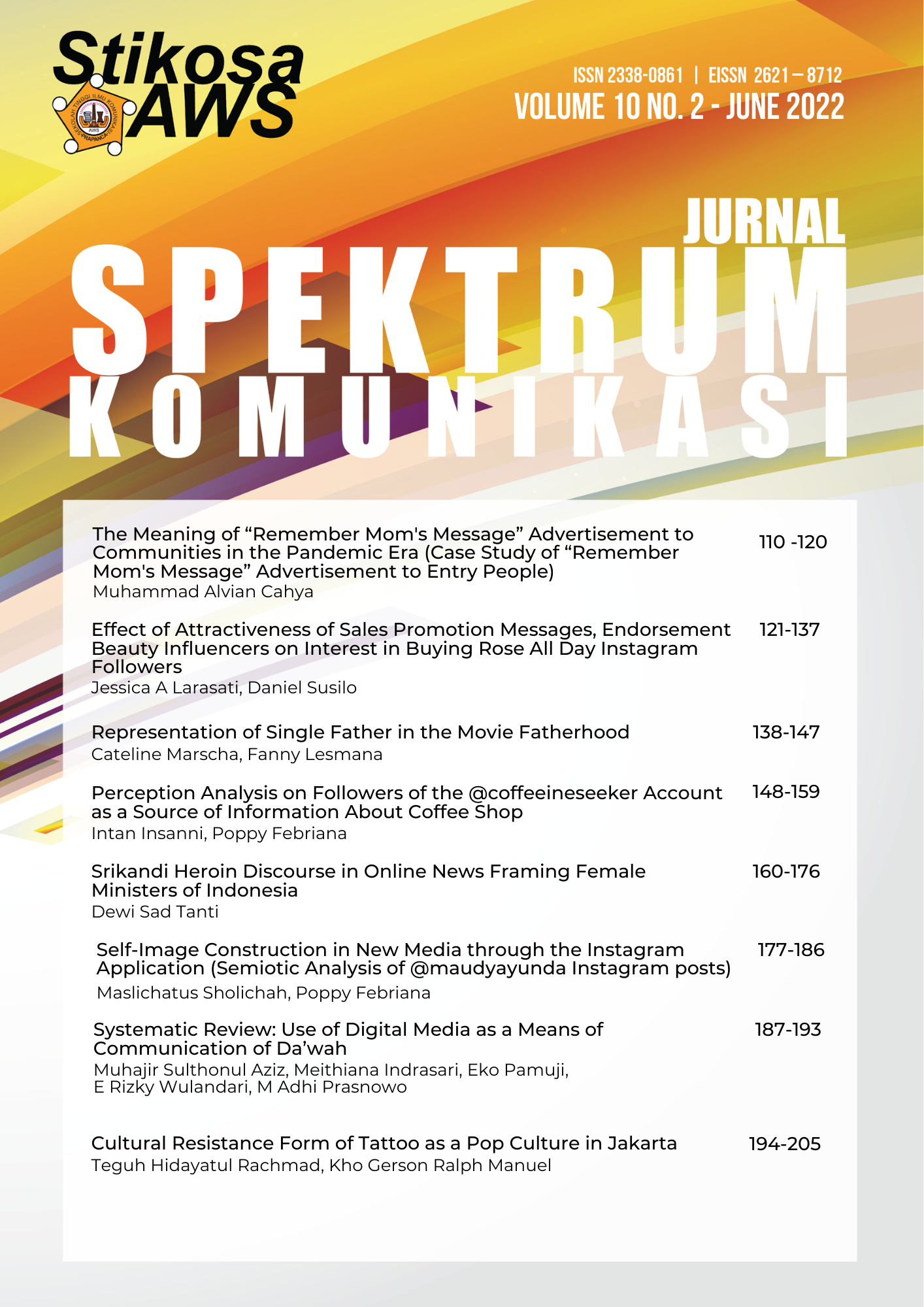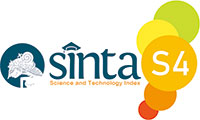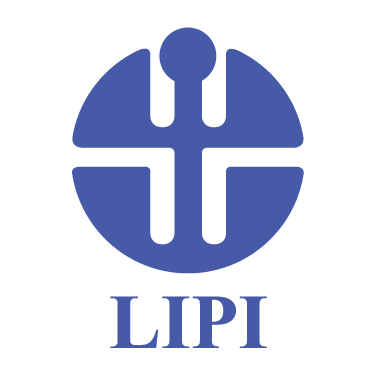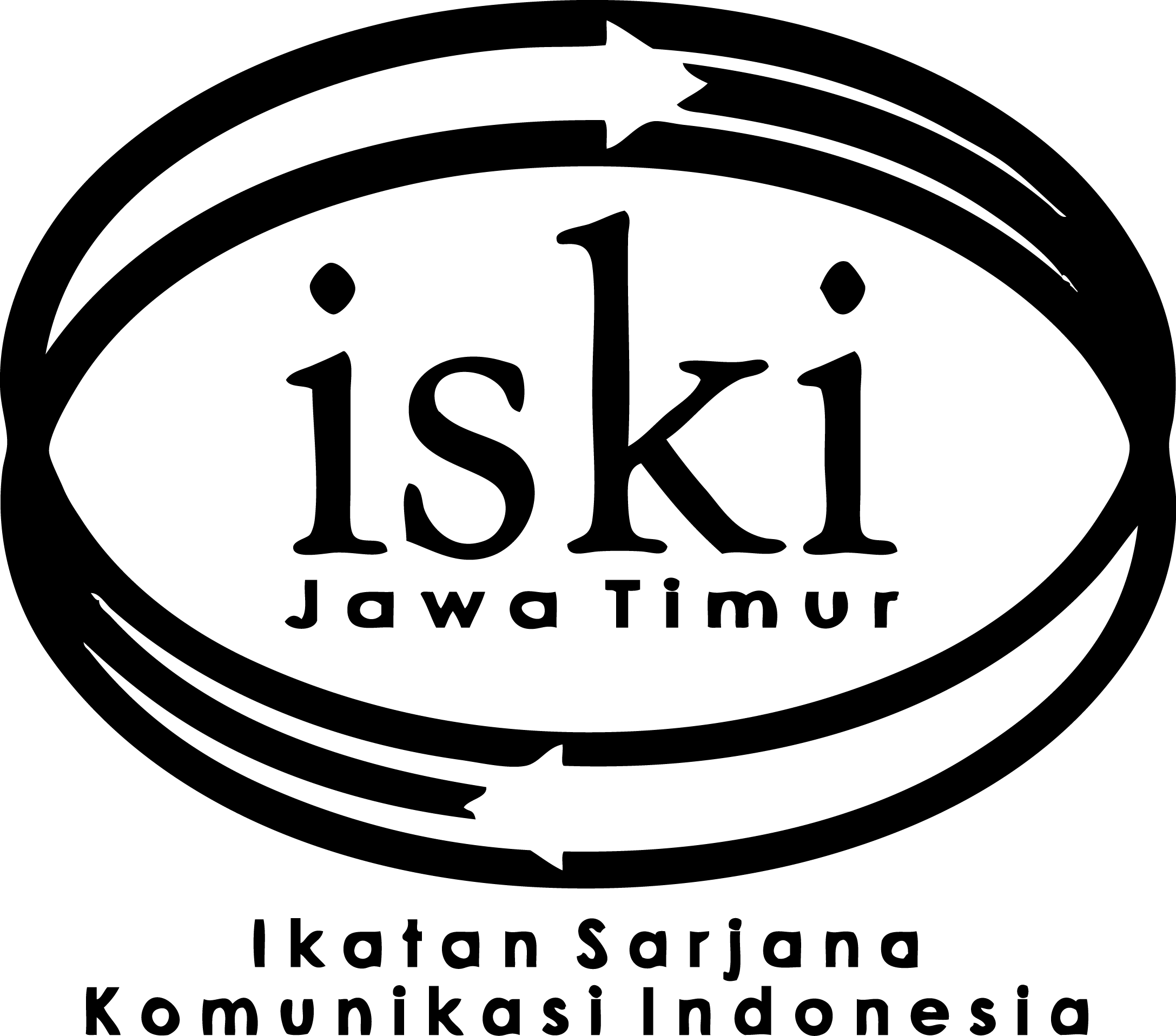Effect of Attractiveness of Sales Promotion Messages, Endorsement Beauty Influencers on Interest in Buying Rose All Day Instagram Followers
DOI:
https://doi.org/10.37826/spektrum.v10i2.269Keywords:
Message, Endorsements, Beauty, BuyingAbstract
The extensive use of social media by Indonesian marketers has encouraged local cosmetic company, Rose All Day Cosmetics, to use Instagram as a sales promotion and endorsement platform. Petty & Cacioppo's Elaboration Likelihood Model (ELM) theory is used in this study, such as the attractiveness theory of promotional messages, endorsement theory, and buying interest theory. These conditions underlie this research which aims to see whether the attractiveness of sales promotion messages, endorsements from beauty influencers have an impact on buying interest. This research is a quantitative explanatory study that relies on surveys as a data collection tool. Questionnaires were distributed to the study population via Instagram's direct message feature to the 102,000 followers of the account, who used the Yamane formula for Rose All Day Cosmetics. This study uses a non-probability sampling technique called purposive sampling, which involves selecting 398 people who meet predetermined criteria. Multiple linear regression is the data analysis method used in this study. The researcher found that the attractiveness of sales promotion messages on the Rose All Day Cosmetics Instagram account and endorsements by beauty influencers had a significant effect on followers' purchase intentions up to 53.2 percent, with the remaining 48.7 percent influenced by factors outside the study. However, these two variables have a significant effect on followers' purchase intentions. In conclusion, the attractiveness of sales promotion messages and endorsements has a significant effect on followers' buying interest partially or simultaneously on each of the variables studied
References
AlFarraj, O., Alalwan, A. A., Obeidat, Z. M., Baabdullah, A., Aldmour, R., & Al-Haddad, S. (2021). Examining the impact of influencers’ credibility dimensions: attractiveness, trustworthiness and expertise on the purchase intention in the aesthetic dermatology industry. Review of International Business and Strategy.
Bungin, B. (2011). Metode Kuantitatif. Jakarta: Kencana Prenada Media Group.
Butow, E., Herman, J., Liu, S., Robinson, A., & Allton, M. (2020). Ultimate Guide to Social Media Marketing. Entrepreneur Press.
Decker, A. (2017). Instagram Marketing. https://www.hubspot.com/instagram-marketing
Duncan, T. (2008). Principles of advertising and IMC. Boston: McGraw-Hill.
Griffin, E., Ledbetter, A., & Sparks, G. (2015). Communication Privacy Management Theory of Sandra Petronio. New York, NY: McGraw-Hill Education.
Iqbal, M. (2021). Instagram Revenue and Usage Statistics (2021). https://www.businessofapps.com/data/instagram-statistics/
Kemenperin.go.id. (2018). Industri Kosmetik Nasional Tumbuh 20%. https://kemenperin.go.id/artikel/18957/Industri-Kosmetik-Nasional-Tumbuh-20
Kemp, S. (2021). Digital 2021: Indonesia. https://datareportal.com/reports/digital-2021-indonesia
Kotler, P, & Armstrong, G. (2010). Principles of marketing. Pearson education.
Kotler, P, & Keller, K. (2016). Marketing management. Harlow: Pearson Education. https://doi.org/https://doi. org/10.1080/08911760903022556
Kotler, Philip, Kartajaya, H., & Setiawan, I. (2017). Marketing 4.0. Moving from Traditional to Digital, Published by John Wiley&Sons (Vol. 32). Inc., Hoboken, New Jersey.
Kriyantono, R. (2014). Teknik Praktis Riset Komunikasi. Prenada Media.
Massardi, G. (2018). Pengaruh Tingkat Daya Tarik Konten Instagram Terhadap Pembentukan Citra Merek Rollover Reaction. Universitas Multimedia Nusantara.
McCracken, G. (1989). Who is the celebrity endorser? Cultural foundations of the endorsement process. Journal of Consumer Research, 16(3), 310–321.
Newberry, C. (2021). 44 Instagram Stats That Matter to Marketers in 2021. https://blog.hootsuite.com/instagram-statistics/
Ogden-Barnes, S., & Minahan, S. (2015). Sales promotion decision making: concepts, principles, and practice. Business Expert Press.
Pelakubisnis.com. (2020). Indonesia Pasar Potensial Produk Kosmetik. https://pelakubisnis.com/2020/02/indonesia-pasar-potensial-produk-kosmetik/
Peter, J., Olson, J., & Grunert, K. (2009). Consumer behaviour and marketing strategy. McGraw-hill London, UK:
Quesenberry, K. (2020). Social media strategy: Marketing, advertising, and public relations in the consumer revolution. Rowman & Littlefield Publishers.
Roseallday.co. (2021). WHY WE ROSÉ. https://roseallday.co/pages/about
Sarwono, J. (2006). Metode Penelitian Kuantitatif dan Kualitatif. Yogyakarta: Graha Ilmu.
Shimp, T. (2010). Integrated marketing communcations in advertising & promotion, 8e. Boston: Cengage learning.
Shimp, T., & Andrews, J. (2013). Advertising, promotion, and other aspects of integrated marketing communications. South-Western College Pub.
Sugiarto, M. (2015). Metode Statistika Bisnis. Jakarta: Matana Publishing.
Sugiyono. (2016). Metodologi penelitian kuantitatif kualitatif. In Bandung: Alfabeta. Bandung: Alfabeta. https://doi.org/10.1164/rccm.200409-1267OC
Sugiyono. (2018a). Business Research Method. Bandung: Alfabeta Press.
Sugiyono. (2018b). Metode Penelitian Kuantitatif, Kualitatif, Dan R&D. Penerbit CV. Alfabeta.
Sukma Alam. (2020). the Role of Influencer as Persuasive Communication for Covid-19 Prevention. Jurnal Spektrum Komunikasi, 8(2), 136-148. https://doi.org/10.37826/spektrum.v8i2.106
Susilo, D. (2021a). AKSI-AKSI WARGANET PADA BERITA DARING: Cabaran pada Studi Posfeminisme dan Politik. Airlangga University Press.
Susilo, D. (2021b). Analisis wacana kritis van dijk: sebuah model dan tinjauan kritis pada media daring. Unitomo Press.
Susilo, D, & Putranto, T. (2021). Content analysis of instagram posts related to the performance of the national search and rescue agency in early 2021. Jurnal Komunikasi Profesional, 5(1). https://doi.org/https://doi.org/10.25139/jkp.v5i1.3463
Susilo, D, Putranto, T., & Navarro, C. (2021). Performance of Indonesian Ministry of Health in Overcoming Hoax About Vaccination Amid the COVID-19 Pandemic on Social Media. Nyimak: Journal of Communication, 5(1), 151–166.
Susilo, Daniel, & Putranto, T. (2018). Indonesian Youth on Social Media: Study on Content Analysis. https://doi.org/10.2991/sshr-17.2018.15
Weismueller, J., Harrigan, P., Wang, S., & Soutar, G. N. (2020). Influencer endorsements: How advertising disclosure and source credibility affect consumer purchase intention on social media. Australasian Marketing Journal, 28(4), 160–170.
Yunus, E., Susilo, D., Riyadi, S., Indrasari, M., & Putranto, T. D. (2019). The effectiveness marketing strategy for ride-sharing transportation: intersecting social media, technology, and innovation. Entrepreneurship and Sustainability Issues, 7(2), 1424–1434. https://doi.org/10.9770/jesi.2019.7.2(44)
Zhu, H., Kim, M., & Choi, Y. K. (2022). Social media advertising endorsement: the role of endorser type, message appeal and brand familiarity. International Journal of Advertising, 41(5), 948–969.

























